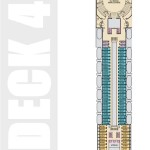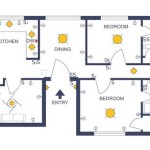
Small kitchen floor plans are a vital component of kitchen design, as they dictate the layout and functionality of the space. These plans are essential for maximizing space utilization and ensuring efficient workflow in compact kitchens.
In smaller kitchens, every inch of floor space is crucial, and careful planning is necessary to accommodate essential appliances, storage units, and work surfaces. Small kitchen floor plans often incorporate creative solutions, such as space-saving cabinetry, fold-down tables, and multi-functional appliances, to maximize efficiency and minimize clutter.
In this article, we will explore different small kitchen floor plans, their advantages, and how they can be tailored to specific needs and preferences. We will also discuss key considerations for creating functional and visually appealing small kitchen spaces.
When planning a small kitchen, careful consideration of the floor plan is essential to ensure optimal functionality and space utilization.
- Maximize vertical space
- Utilize corners effectively
- Incorporate multi-purpose appliances
- Consider space-saving storage solutions
- Create efficient work triangles
- Prioritize natural light
- Use reflective surfaces to enhance space
- Declutter and minimize unnecessary items
- Choose appropriate appliances and fixtures
- Consider an open-concept layout
By incorporating these key points into your small kitchen floor plan, you can create a functional, efficient, and visually appealing space that meets your specific needs and preferences.
Maximize vertical space
In small kitchens, maximizing vertical space is crucial for increasing storage capacity and improving functionality. By utilizing the height of the room, you can create additional storage and work surfaces without sacrificing valuable floor space.
- Wall-mounted cabinets: Install cabinets on the walls to store dishes, cookware, and other kitchen essentials. Choose cabinets that reach all the way to the ceiling to maximize storage capacity.
- Shelving and racks: Utilize shelves and racks to store spices, condiments, and other frequently used items. These can be mounted on walls, inside cabinets, or even on the back of doors.
- Stackable containers: Use stackable containers to organize and store food items, pantry staples, and other kitchen supplies. This vertical storage solution helps keep clutter off the countertops and maximizes space utilization.
- Hanging pot racks: Install hanging pot racks from the ceiling to store pots, pans, and other cooking utensils. This frees up cabinet space and keeps essential cookware within easy reach.
By maximizing vertical space in your small kitchen, you can significantly increase storage capacity, improve Funktionalitt, and create a more organized and efficient cooking space.
Utilize corners effectively
In small kitchen floor plans, corners often go unused or underutilized, presenting a valuable opportunity to maximize space and functionality. By incorporating clever design solutions, you can transform these often-wasted areas into efficient and practical workspaces or storage units.
Corner sinks: Corner sinks are a great way to save space and create a more efficient work triangle in small kitchens. By placing the sink in the corner, you can free up valuable counter space along the walls for other tasks, such as food preparation or cooking. Corner sinks also allow for easier access to the sink from multiple angles, making it more convenient for multiple users to work in the kitchen simultaneously.
Corner pantries: Corner pantries are another excellent way to utilize unused space in small kitchens. These pantries can be customized to fit the specific dimensions of your kitchen and provide ample storage for food items, cookware, and other kitchen essentials. Corner pantries are particularly useful for storing bulky items, such as pots, pans, and appliances, that may not fit well in traditional cabinets.
Corner appliance garages: Corner appliance garages are a great way to keep small appliances, such as toasters, blenders, and coffee makers, out of sight and off the countertops. These garages can be built into the cabinetry or created using freestanding units, and they provide a convenient and organized space to store appliances when not in use.
By utilizing corners effectively in your small kitchen floor plan, you can create a more functional and efficient space that maximizes storage capacity and improves workflow.
Incorporate multi-purpose appliances
Incorporating multi-purpose appliances into your small kitchen floor plan is a clever way to maximize functionality and save space. By choosing appliances that serve multiple functions, you can reduce the number of appliances you need, freeing up valuable counter and storage space.
- Microwave with convection or air fryer: A microwave with convection or air fryer capabilities combines the functionality of a traditional microwave with the ability to bake, roast, or air fry food. This eliminates the need for separate appliances, saving space and providing more cooking options.
- Toaster oven with air fryer: A toaster oven with air fryer combines the functionality of a toaster oven with the ability to air fry food. This versatile appliance can be used to toast bread, bake small dishes, and air fry a variety of foods, reducing the need for a separate air fryer and oven.
- Multi-cooker: A multi-cooker is a versatile appliance that can be used to cook a variety of dishes, including rice, soup, stew, and slow-cooked meals. Multi-cookers often have multiple cooking functions, such as sauting, steaming, and pressure cooking, eliminating the need for separate appliances for each function.
- Refrigerator with built-in water dispenser and ice maker: A refrigerator with a built-in water dispenser and ice maker provides easy access to cold water and ice without the need for a separate water cooler or ice maker. This feature saves counter space and provides convenience.
By incorporating multi-purpose appliances into your small kitchen floor plan, you can create a more functional and efficient space that meets your cooking needs without sacrificing valuable space.
Consider space-saving storage solutions
In small kitchens, maximizing storage space is crucial for maintaining a functional and organized space. By implementing clever storage solutions, you can utilize every available inch of space efficiently and keep your kitchen clutter-free.
- Vertical storage: Utilize vertical space by installing wall-mounted shelves, hanging organizers, and stackable containers. Vertical storage solutions help keep items off the countertops and maximize space utilization.
- Under-sink storage: Make use of the space under the sink by installing pull-out drawers or shelves. This hidden storage area is perfect for storing cleaning supplies, sponges, and other items that you want to keep out of sight.
- Corner storage: Utilize corner spaces by installing corner shelves, lazy Susans, or pull-out drawers. Corner storage solutions help maximize space utilization and make it easier to access items in hard-to-reach areas.
- Drawer organizers: Drawer organizers help keep drawers neat and tidy, maximizing storage capacity and making it easier to find what you need. Consider using drawer dividers, cutlery trays, and other organizers to keep items separated and organized.
By implementing these space-saving storage solutions, you can create a more functional and efficient small kitchen that meets your storage needs without sacrificing valuable space.
Create efficient work triangles
In kitchen design, the work triangle refers to the three main work areas in the kitchen: the sink, the refrigerator, and the stove. The efficiency of the work triangle directly impacts the functionality and convenience of the kitchen, especially in small kitchens where space is limited.
- Keep the work triangle compact: The closer the three elements of the work triangle are to each other, the more efficient the kitchen will be. Aim to keep the total distance between the three elements to around 12-15 feet.
- Avoid obstacles: Ensure that there are no obstacles or barriers between the elements of the work triangle. This will allow for smooth and efficient movement between these areas.
- Consider the placement of appliances: When planning the layout of your small kitchen, carefully consider the placement of appliances to create an efficient work triangle. For example, placing the refrigerator near the sink allows you to easily rinse fruits and vegetables before storing them.
- Maximize counter space: Ample counter space is crucial for efficient food preparation and cooking. When creating the work triangle, ensure that there is sufficient counter space between the sink, refrigerator, and stove to accommodate your needs.
By creating an efficient work triangle in your small kitchen, you can significantly improve the functionality and convenience of the space, making cooking and meal preparation more enjoyable and efficient.
Prioritize natural light
Incorporating natural light into your small kitchen floor plan is crucial for creating a bright, inviting, and energy-efficient space. Natural light not only enhances the aesthetics of the kitchen but also provides several practical benefits.
Maximize window space: Windows are the primary source of natural light in a kitchen. When planning your small kitchen floor plan, prioritize maximizing window space to allow ample natural light to enter the room. Consider installing large windows or skylights to bring in as much natural light as possible.
Position windows strategically: The placement of windows significantly impacts the amount of natural light that enters the kitchen. Position windows opposite or adjacent to work surfaces to ensure that tasks such as food preparation, cooking, and cleanup are well-lit. Avoid placing windows above upper cabinets or in corners, as this can limit the amount of natural light reaching the work areas.
Use reflective surfaces: Reflective surfaces, such as white or light-colored walls, backsplashes, and countertops, help bounce natural light around the kitchen, making the space feel larger and brighter. Incorporate reflective surfaces into your small kitchen floor plan to maximize the impact of natural light and create a more spacious feel.
Consider artificial lighting: While natural light is ideal, it may not be sufficient during all hours of the day or in all seasons. Plan for artificial lighting to supplement natural light when necessary. Choose energy-efficient LED lighting fixtures that provide bright and even illumination throughout the kitchen.
By prioritizing natural light in your small kitchen floor plan, you can create a brighter, more inviting, and energy-efficient space that enhances both the functionality and aesthetics of the kitchen.
Use reflective surfaces to enhance space
Incorporating reflective surfaces into your small kitchen floor plan is a clever way to maximize the impact of natural light and create a more spacious feel. Reflective surfaces bounce light around the room, making the space appear larger and brighter. Here are some specific ways to use reflective surfaces to enhance space in your small kitchen:
Light-colored walls and cabinets: Painting your kitchen walls and cabinets in light colors, such as white, cream, or light gray, will help reflect natural light and make the space feel more open and airy. Avoid dark colors, as they absorb light and can make the kitchen feel smaller and more cramped.
Glossy finishes: Glossy finishes on cabinets, countertops, and backsplashes reflect light more effectively than matte finishes. This can help to brighten up the kitchen and make it feel more spacious. If you are choosing glossy finishes, opt for light colors to maximize the reflective effect.
Mirrors: Mirrors are a great way to reflect light and create the illusion of more space. Consider installing a mirror on the back of a cabinet door or on a wall opposite a window to bounce light around the kitchen. You can also use mirrored tiles for the backsplash to create a dramatic and space-enhancing effect.
Metallic accents: Metallic accents, such as stainless steel appliances, brass hardware, or copper fixtures, can reflect light and add a touch of glamour to your small kitchen. Use metallic accents sparingly to avoid overwhelming the space, but strategically placed metallic elements can help to brighten up the kitchen and make it feel more spacious.
By incorporating reflective surfaces into your small kitchen floor plan, you can create a brighter, more inviting, and more spacious feel. Reflective surfaces bounce light around the room, making the space appear larger and more welcoming.
Declutter and minimize unnecessary items
Decluttering and minimizing unnecessary items is crucial for creating a more spacious and functional small kitchen. By getting rid of excess clutter, you can free up valuable counter and storage space, making the kitchen more efficient and enjoyable to use.
- Regularly declutter: Make it a habit to declutter your kitchen on a regular basis. Go through your cabinets, drawers, and pantry, and get rid of anything you don’t use or need. Be ruthless in your decluttering efforts, and don’t be afraid to throw away or donate items that you no longer use.
- Keep only essential appliances and cookware: In a small kitchen, it’s important to be selective about the appliances and cookware you keep. Only keep the items that you use on a regular basis, and get rid of anything that you don’t use anymore. Consider multi-purpose appliances that can perform multiple functions, saving you space and clutter.
- Store items vertically: Make use of vertical space by storing items vertically whenever possible. Use stackable containers, shelves, and hanging organizers to store items off the countertops and out of the way. Vertical storage solutions can help you maximize space utilization and keep your kitchen clutter-free.
- Get rid of duplicates: Take inventory of your kitchen items and get rid of any duplicates. For example, if you have multiple spatulas or can openers, keep only the ones that you use most often and donate or discard the rest. Eliminating duplicates can free up valuable space and reduce clutter.
By decluttering and minimizing unnecessary items in your small kitchen, you can create a more spacious, functional, and enjoyable space. Remember, less is more when it comes to small kitchen floor plans.
Choose appropriate appliances and fixtures
When selecting appliances and fixtures for your small kitchen, it’s important to choose wisely to maximize space and functionality. Consider the following points:
- Size and scale: Choose appliances and fixtures that are appropriately sized for your small kitchen. Avoid bulky or oversized items that will overwhelm the space. Opt for compact appliances and fixtures that fit comfortably without compromising functionality.
Multi-purpose appliances: Consider multi-purpose appliances that can perform multiple functions, saving you space and clutter. For example, a microwave with convection or air fryer capabilities can replace both a traditional microwave and a separate air fryer. A combination oven can serve as both an oven and a microwave, saving valuable counter and cabinet space.
Under-counter appliances: Under-counter appliances, such as refrigerators, dishwashers, and ovens, can help you save floor space and create a more streamlined look in your small kitchen. These appliances are built into the cabinetry, leaving more space for food preparation, storage, and other activities.
Space-saving fixtures: Choose space-saving fixtures, such as pull-out drawers, corner lazy Susans, and wall-mounted pot racks, to maximize storage and functionality. These fixtures allow you to utilize every inch of space in your small kitchen and keep your belongings organized and accessible.
By carefully selecting appliances and fixtures that are appropriate for the size and layout of your small kitchen, you can create a functional and efficient space that meets your cooking and storage needs without sacrificing style or functionality.
Consider an open-concept layout
An open-concept layout can be an excellent way to maximize space and create a more cohesive and inviting atmosphere in a small kitchen. By removing walls or partitions between the kitchen and adjacent areas, such as the living room or dining room, you can create a more spacious and airy feel.
- Increased natural light: Removing walls allows for more natural light to enter the kitchen, making the space feel brighter and more inviting.
- Improved flow and functionality: An open-concept layout improves the flow of traffic and makes it easier to move around the kitchen, especially when entertaining guests or cooking with multiple people.
- Enhanced social interaction: An open-concept kitchen allows for better interaction between people in the kitchen and those in adjacent areas, fostering a more social and connected atmosphere.
- Space optimization: By removing walls, you can optimize space utilization and create the illusion of a larger kitchen. This can be particularly beneficial in small apartments or homes where space is limited.
It’s important to note that open-concept layouts may not be suitable for all kitchens. If you prefer a more traditional closed-off kitchen or require more privacy, an open-concept layout may not be the best choice. Additionally, consider factors such as noise levels, cooking odors, and the need for separate cooking and dining spaces when making your decision.









Related Posts








